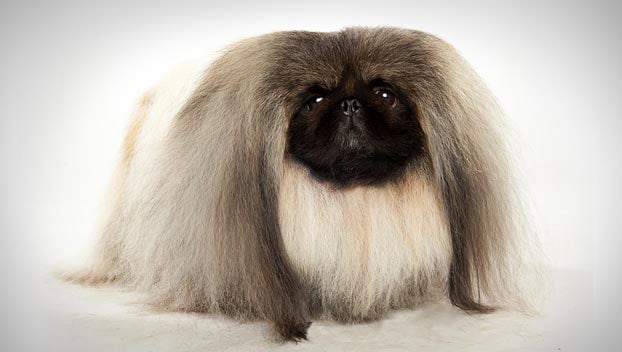Pekingese
The Pekingese owes its existence to the Lamaist form of Buddhism in China, in which the lion was an exalted symbol of Buddha, sometimes appearing in miniaturized form. The Foo dogs then in existence bore some resemblance to a lion and were carefully bred to accentuate this similarity. In fact, these dogs eventually came to be known as lion dogs. Extensive breeding programs fell under the auspices of palace eunuchs, with no expense spared. At the height of their favor (during the T'ang Dynasty from A.D. 700 to A.D. 1000) many of these lion dogs were literally treated as royalty, pampered by personal servants. Smaller Pekingese were called sleeve dogs because they could be carried in the large sleeves of their Chinese masters. In 1860, the British looted the Imperial Summer. Among their loot were five royal lion dogs, which were taken back to England. One was presented to Queen Victoria, and it, along with the other four, caused such interest among dog fanciers that there arose great demand for more of these dogs. Still, their numbers rose slowly, and for decades the Pekingese remained a dog only for the wealthiest of owners. With time, the breed became more readily available and has since suffered from over-popularity. Today its main role is as a companion and show dog.
 Login
Login







